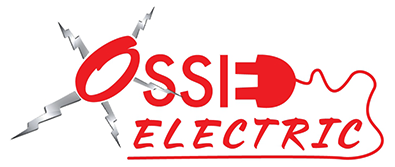Generator
If power outages have become too disruptive, consider getting a generator. Instead of listening to the automated voice message of your local utility, call us at Ossie Electric for a free consultation.
Oh, no! A major storm is forecasted and you are now stressed that a tree will fall on a nearby power line and leave you without electricity for hours, if not days.
- Indoor temperatures will drop below comfortable.
- There’ll be no hot showers.
- Groceries will have to be discarded.
- A hotel will cost hundreds each night in lodging and food.
- From work to school to play, routines will be out of kilter throughout the outage.
But there is another option. If power outages have become too disruptive, consider getting a generator. Instead of listening to the automated voice message of your local utility, call us at Ossie Electric for a free consultation. We’ll provide expert advice and installation services.
In 1831, scientist Michael Faraday discovered a magnet moving inside a coil of wire produced an electric current. Generators were developed leveraging that relationship between magnetism and electricity. Modern units have an engine that is started by a battery to produce mechanical energy. The alternator converts this kinetic energy to electricity. Then, engine components must be kept lubricated and cooled, and dangerous gases properly exhausted.
The standby generator provides power that would otherwise be unavailable during an outage. When the electric grid is disrupted, an automatic transfer switch cuts over to the backup system within seconds. Select, or all, outlets powering items such as lights, boilers, televisions or refrigerators could still work. A home or business could be operable rather than leaving residents or patrons in the dark. Once the main electric power has returned, a generator shuts down accordingly.
Many systems deploy propane as a fuel source. The time before refueling varies but is often at least six hours. For a commercial setting, a bigger external tank could be erected, subject to building codes.
With all the moving parts, a cooling and ventilation system is needed to dissipate the engine’s internal heat. Water can be used for smaller installations. For most residential and industrial applications, a standard radiator and fan are deployed. Sophisticated units could use hydrogen as a coolant.
Other safety and maintenance matters include:
- Routing exhaust fumes properly to avoid carbon monoxide poisoning.
- Housing your generator in a customized frame for structural and operational safety.
- Lubricating oil in your generator’s engine at recommended intervals.
- Examining for any leakages.
- Checking coolant levels.
- Periodically flushing the system and cleaning the heat exchanger.
The interface to operate the unit and to connect to appliances vary by product. At Ossie Electric, we’ll instruct you on how to monitor various gauges for safe usage. At a time when worlds of information and entertainment are at our fingertips, it becomes increasingly difficult to consider even a day without electricity. A few hours without Internet or even an outlet to charge our phones renders many of us unable to communicate, to unwind, or to cook a meal. With any luck, when the power returns, it doesn’t surge and fry, say, your garage door opener. Worse still, if medical needs depend upon an electric-powered machine, an outage could be dire.
Whatever your situation, once you decide that you’d rather not weather the inconsistency of your local utility, call us at Ossie Electric to expertly install your generator.
